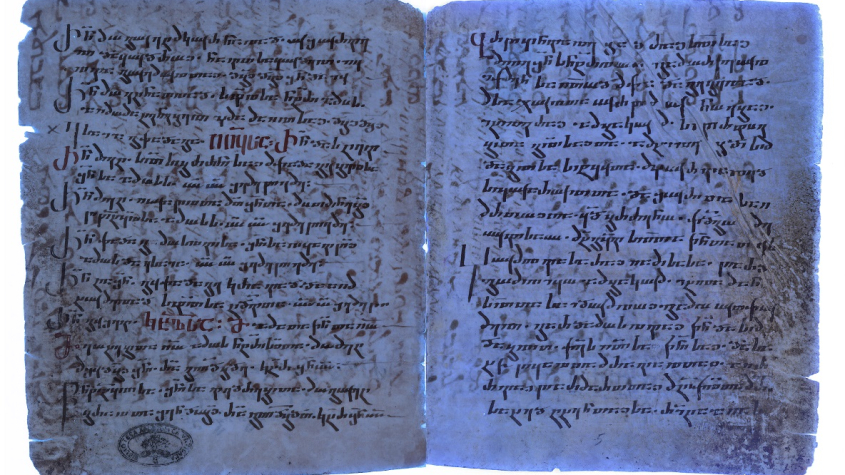Researchers discover 1,750-year-old Syriac translation of Gospel of Matthew in palimpsest manuscript using with UV photography
Researchers from the Austrian Academy of Sciences (OeAW) have discovered a small manuscript fragment of the Syriac translation of the New Testament, which is one of the oldest textual witnesses of the Gospels. The fragment was produced in the 3rd century and copied in the 6th century. The discovery of the fragment is an important piece of the puzzle in New Testament history.
Grigory Kessel, a medievalist from the Austrian Academy of Sciences, was able to identify the fragment with the help of ultraviolet photography. The fragment was found as the third layer of text, or double palimpsest, in the Vatican Library manuscript. The discovery of the fragment makes it the fourth textual witness to attest to the Old Syriac version.
The Syriac translation was produced at least a century before the oldest Greek manuscripts that have survived, including the Codex Sinaiticus. The earliest surviving manuscripts with this Syriac translation date from the 6th century and are preserved in the erased layers, so-called palimpsests, of newly written parchment leaves.
According to medievalist Grigory Kessel, “The tradition of Syriac Christianity knows several translations of the Old and New Testaments. Until recently, only two manuscripts were known to contain the Old Syriac translation of the gospels.” While one of these is now kept in the British Library in London, another was discovered as a palimpsest in St. Catherine’s Monastery at Mount Sinai. The fragments from the third manuscript were recently identified in the course of the “Sinai Palimpsests Project”.
The manuscript fragment is a significant find, as it offers a unique gateway to the early phase in the history of the textual transmission of the Gospels. It highlights the significance of understanding the early phases of the textual transmission of the Gospels.


























